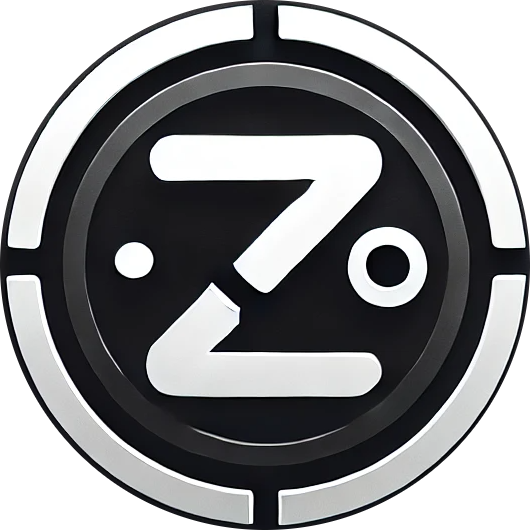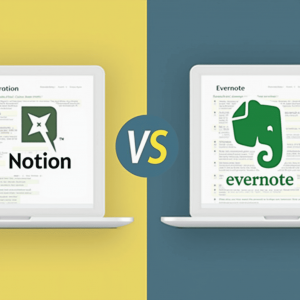
Is your team drowning in endless email threads and misplaced task assignments? You’re not alone. The average professional wastes 9.3 hours weekly searching for information and tracking down project updates, according to a recent Asana Anatomy of Work study.
Choosing the right project management tool isn’t just about organizing tasks—it’s about transforming how your team collaborates and executes. In the battle of Trello vs Asana, both platforms promise to streamline your workflow, but which one actually delivers the solution your specific team needs?
This comprehensive guide cuts through the marketing hype to help you make an informed decision based on your unique requirements, team size, and workflow preferences. By the end, you’ll have a clear understanding of which tool deserves a place in your productivity stack.
Understanding the Basics
Trello: Visual Simplicity
Trello, founded in 2011 and later acquired by Atlassian in 2017, revolutionized project management with its intuitive Kanban-style boards. At its core, Trello organizes work into boards, lists, and cards—a visual approach inspired by the Japanese manufacturing methodology.
What makes Trello stand out is its beautiful simplicity. A Trello board represents a project or workflow, lists denote stages in that process, and cards represent individual tasks or items that move through those stages. This straightforward visualization makes it immediately clear where tasks stand in your workflow.
Asana: Structured Versatility
Asana, co-founded by Facebook co-founder Dustin Moskovitz in 2008, takes a more structured approach to project management. While it now offers various view options including boards, Asana’s foundation is built on a task-list methodology focused on organizing work hierarchically.
In Asana, projects contain tasks, which can have subtasks, creating a nested organizational structure. This approach provides deeper levels of work breakdown, allowing for more complex project structures than Trello’s flatter organization.
User Interface and Learning Curve
Trello: Instantly Intuitive
Trello’s greatest strength is its almost non-existent learning curve. New users typically understand the drag-and-drop card system within minutes, making it exceptionally accessible for teams with varying technical abilities.
The colorful, visual interface uses familiar metaphors that mirror physical productivity systems, creating an intuitive experience that requires minimal training. This accessibility is particularly valuable for teams with members who might be resistant to adopting new software.
Asana: Powerful but Steeper Learning Curve
Asana’s interface, while clean and modern, presents more options upfront. The platform offers multiple ways to view your work—lists, boards, timelines, calendars, and portfolios—providing flexibility but requiring more time to master.
For new users, Asana can initially feel overwhelming due to its wealth of features and organizational options. However, this learning investment pays dividends for complex projects that benefit from Asana’s structured approach to work management.
Core Features Comparison
Task Management
Trello:
- Simple card creation with drag-and-drop functionality
- Checklists within cards for subtasks
- Due dates and time assignments
- Card labels for visual categorization
- Custom fields for additional information
Asana:
- Robust task and subtask hierarchy
- Dependencies between tasks
- Multiple assignees per task (premium feature)
- Custom fields with various data types
- Advanced task templates
Trello’s task management excels in straightforward projects where visual status tracking is paramount. In contrast, Asana shines in complex projects with interdependent tasks and detailed work breakdown structures.
Project Views
Trello:
- Kanban boards (primary view)
- Calendar view
- Table view (limited functionality)
- Dashboard (in premium plans)
- Map view for location-based projects
Asana:
- List view (traditional task lists)
- Board view (Kanban-style)
- Timeline view (Gantt chart equivalent)
- Calendar view
- Workload view for capacity planning
- Portfolios for project grouping
Asana clearly offers more diverse viewing options, allowing teams to switch perspectives based on their needs. Trello, while more limited, excels at what it does best—providing clear visual workflow management.
Reporting and Analytics
Trello:
- Basic dashboard metrics
- Burndown charts (premium feature)
- Custom charts (premium feature)
- Third-party power-ups for advanced analytics
Asana:
- Comprehensive reporting dashboard
- Workload reports for resource management
- Portfolio progress tracking
- Custom exportable reports
- Real-time status updates
Asana provides substantially more robust native reporting capabilities, making it better suited for teams that need to track metrics and generate reports for stakeholders.
Collaboration Capabilities
Communication Tools
Trello:
- Card comments for discussion
- @mentions to notify team members
- Activity log to track changes
- Basic notification system
- Integration with communication tools
Asana:
- Robust commenting system
- Conversation view for project discussions
- @mentions with rich formatting
- Approval workflows
- Proofing capabilities for creative teams
Team Coordination
Trello:
- Team visibility settings
- Board sharing and permissions
- Simple team management
- Email notifications
- Mobile app for on-the-go updates
Asana:
- Team workspaces with customizable permissions
- Forms for work requests
- Rules for automating team processes
- Goals feature for alignment
- Comprehensive notification preferences
Asana offers more sophisticated collaboration features that support larger teams and cross-functional workflows. Trello provides simpler collaboration tools that work well for smaller teams with less complex communication needs.
Integrations and Ecosystem
Trello Integrations
Trello’s “Power-Up” system allows you to enhance boards with additional functionality through integrations. The platform connects with over 200 tools, including:
- Slack for communication
- Google Drive for file storage
- GitHub for development tracking
- Salesforce for CRM
- Time tracking tools like Harvest
Trello’s Butler automation tool also enables no-code workflow automation, though it’s less powerful than Asana’s rules engine.
Asana Integrations
Asana boasts over 200 native integrations with business-critical tools:
- Microsoft Teams and Slack for communication
- Adobe Creative Cloud for design workflows
- Salesforce for customer management
- Tableau and Power BI for analytics
- Developer tools like GitHub, Gitlab, and Bitbucket
Asana’s API is also particularly robust, making custom integrations more feasible for organizations with development resources.
Pricing Breakdown
Trello Pricing (as of March 2025)
- Free: Basic boards, lists, cards, 10 boards per workspace
- Standard: $6/user/month (billed annually) – Adds unlimited boards, advanced checklists, custom fields
- Premium: $12.50/user/month – Adds dashboard view, timeline view, advanced automation
- Enterprise: $17.50/user/month – Adds organization-wide permissions, security features
Asana Pricing (as of March 2025)
- Free: Basic task management, list and board views, 15 users max
- Premium: $13.49/user/month – Adds timeline, custom fields, forms, reporting
- Business: $30.49/user/month – Adds portfolios, workload, goals, advanced integrations
- Enterprise: Custom pricing – Adds advanced security, data controls, custom branding
Trello offers a more affordable entry point for premium features, while Asana’s higher tiers provide more comprehensive project management capabilities for larger organizations.
Use Case Scenarios
When Trello Excels
Agile Development Teams: Trello’s board-based approach naturally complements Scrum and Kanban methodologies, making it ideal for software development teams that operate in sprints and need visual status tracking.
Small Teams and Startups: The intuitive interface and lower price point make Trello an excellent choice for small teams that need to get up and running quickly without extensive training.
Visual Project Types: Creative workflows, content calendars, and event planning benefit from Trello’s visual approach to task management.
Personal Productivity: Trello’s simplicity makes it an excellent choice for individual use cases, from personal to-do lists to wedding planning.
When Asana Shines
Cross-Functional Teams: Asana’s robust permission system and multiple view options make it better suited for teams that span departments and need different ways of visualizing the same work.
Complex Projects: Projects with dependencies, milestones, and nested subtasks are better managed in Asana’s structured environment.
Project Portfolio Management: Organizations managing multiple concurrent projects benefit from Asana’s portfolio features, which provide a high-level view across all initiatives.
Companies Scaling Rapidly: As organizations grow, Asana’s advanced features support the increasing complexity of work management needs.
Pros and Cons
Trello
Pros:
- Exceptionally intuitive interface
- Minimal training required
- Excellent mobile experience
- Visual approach to task management
- Affordable pricing tiers
- Strong automation capabilities through Butler
Cons:
- Limited reporting capabilities
- Less suitable for complex projects
- Basic task dependency features
- Can become unwieldy with very large projects
- Fewer view options than competitors
Asana
Pros:
- Versatile viewing options for different work styles
- Robust task dependency management
- Excellent for complex, multi-stage projects
- Comprehensive reporting tools
- Strong goal-setting and tracking features
- Advanced automation capabilities
Cons:
- Steeper learning curve
- More expensive than alternatives
- Can feel overwhelming for simple projects
- Mobile experience less intuitive than desktop
- Free tier has significant limitations
Final Verdict
Choose Trello if:
- Visual workflow management is your priority
- You need a solution your team can adopt immediately
- Your projects are relatively straightforward
- Budget constraints are a consideration
- Kanban-style management aligns with your workflow
Choose Asana if:
- You manage complex projects with interdependencies
- Your organization needs robust reporting capabilities
- Multiple view options are important to your team
- You need a solution that can scale with your organization
- Task hierarchy and structure are essential to your workflow
Ultimately, there’s no one-size-fits-all answer in the Trello vs Asana debate. Your team’s size, project complexity, budget, and preferred work style will determine which platform best serves your needs. Many organizations even use both tools for different departments or project types, leveraging the strengths of each.
Frequently Asked Questions
Can I migrate my projects from Trello to Asana (or vice versa)?
Yes, both platforms offer import/export capabilities. Asana has a dedicated Trello importer that preserves most of your board structure. Moving from Asana to Trello requires more manual work, typically using CSV exports and imports.
Which platform offers better time tracking features?
Neither platform offers robust native time tracking. Both integrate with specialized time tracking tools like Harvest, Toggl, and Everhour. Asana’s time tracking integrations tend to be more comprehensive due to its more detailed task structure.
How do Trello and Asana handle resource management?
Asana provides superior resource management through its Workload view, which shows team capacity and allows for balancing work across team members. Trello lacks native resource management features but can be extended with third-party Power-Ups.
Are there limits to how many tasks I can create in the free versions?
Trello’s free version allows unlimited cards (tasks) but limits you to 10 boards per workspace. Asana’s free plan includes unlimited tasks but caps teams at 15 members and lacks more advanced features.
Which platform has better security features?
Both offer enterprise-grade security, but Asana’s Enterprise plan provides more advanced security features, including SAML SSO, data export capabilities, and custom branding. Trello Enterprise offers similar features but with less granular control.













